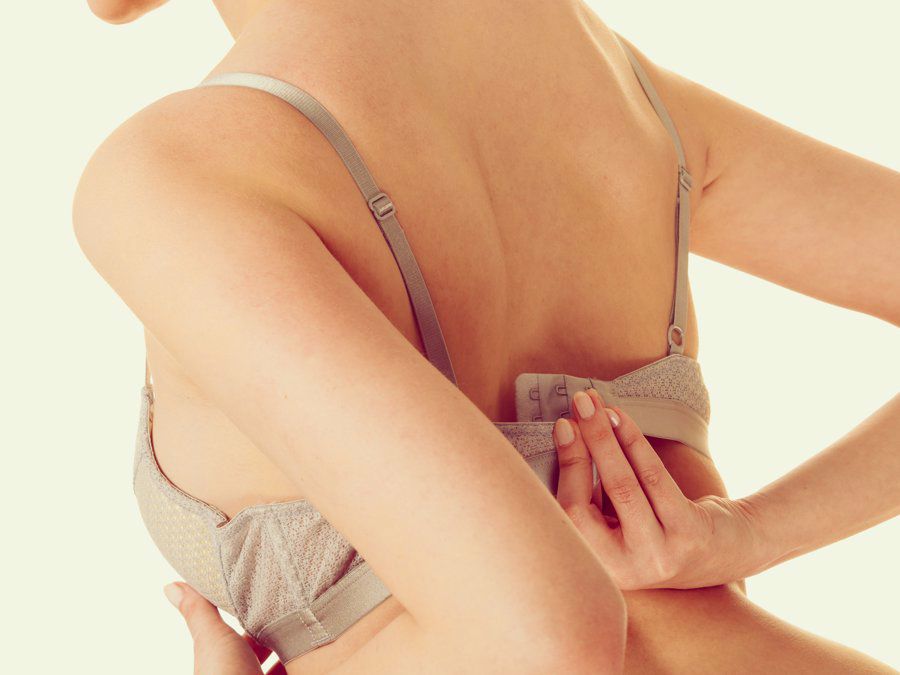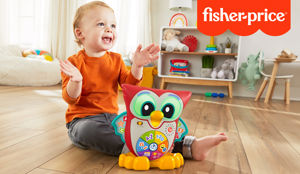The size of your breasts before you give birth and between 1 and 2 weeks after birth will vary greatly due to your milk production adjusting to the requirements of your new baby. They will swell and deflate during this time and eventually settle after the second week. Because of this fluctuation in size, finding the right nursing bra ahead of time can be a little difficult, though the closer to your baby’s birth or 2 weeks after birth is generally much easier.
To find your bra size, you’ll need some measuring tape. Place the tape around your rib cage, just under the breasts and arms. This will help you find your bandwidth. Add 3 inches (7.6cm) to this figure for your correct band size. If it is an odd number, choose the next highest even number.
To find your cup size, put the measuring tape around your back, level with the fullest part of your breast. It’s easier to do this if you’re already wearing a bra, as your breasts should then be sitting where they’re supposed to. Keep the tape straight and level to get an accurate measurement. Calculating the difference between your band measurement and your cup measurement will determine what cup size you are.
+0 - 1.5in - A
+1.5 - 2.5in - B
+2.5 - 3.5in - C
+3.5 - 4.5in - D
+5 - 6in - DD or E
+6 - 7in - F
+7 - 8in - G or GG
+8 - 9in - H or HH
+10in - I
+10 - 11in - J
Your size, however, can also change depending on the style of bra you are hoping to purchase, as well as the brand the bra is from. Going to a shop to try on as many nursing bra styles and brands as possible will help you find the correct size. When wearing a bra, the back band should be completely level all the way around and should fit comfortably around, allowing space for two fingers to fit under the band. Straps should be tight, but not digging in, again use the two-finger rule and ensure the straps aren’t so tight that they cause the band to be pulled up. Lean forward and jiggle and lift your breasts into the cup properly. The material of the cup should fit smoothly over your breast and not be loose or dig in. If it's loose, drop a cup size, if it’s tight, go up a cup size. If looking at multiple brands or know your size but not necessarily how it sits on you, as a general rule, if you go down a back size, you must go up a cup size to find similarly sized bras.
The tightest hook setting should be a firm fit using the two-finger rule, the loosest hooks should be the most comfortable. If the tightest setting is most comfortable, drop down a back size. It also may be a good idea to buy a strap extender as a ‘just in case’ item to expand an ill-fitting band when the cups still fit.

If you have large breasts, opt for a wide strap as this stops the bra digging in too much and help distribute the weight more evenly as your breasts get heavier once filled with milk. To allow maximum airflow and prevent that horrid under-boob sweat, choose a light, breathable material such as cotton or synthetics as they will also help prevent moisture build-up which can encourage bacterial growth, particularly when breastfeeding. Try to avoid underwire unless absolutely necessary as underwire bras have been known to block milk ducts, causing an infection and leading to mastitis.
The most important thing when choosing a nursing bra is finding one that has a front flap fastening that can easily be undone with one hand. Avoid bras that expose the breast completely when breastfeeding if you want to be discreet. Bras without the front flap but instead allow you to pull the fabric to the side are great for sleeping in and night feed.
Once you’ve chosen the right nursing bra that fits around the ribs, cups your breasts comfortably, doesn’t dig in and allows you quick, discreet access to your nipple for breastfeeding, stock up! Buy at least 3 of the front flap bras and at least 1 or 2 side access ‘comfy’ bras to ensure you’ve always got one clean.





